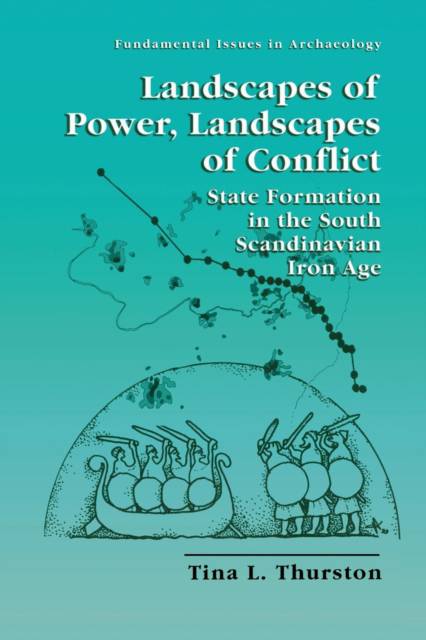
- Afhalen na 1 uur in een winkel met voorraad
- Gratis thuislevering in België vanaf € 30
- Ruim aanbod met 7 miljoen producten
- Afhalen na 1 uur in een winkel met voorraad
- Gratis thuislevering in België vanaf € 30
- Ruim aanbod met 7 miljoen producten
Zoeken
Landscapes of Power, Landscapes of Conflict
State Formation in the South Scandinavian Iron Age
Tina L Thurston
€ 167,95
+ 335 punten
Uitvoering
Omschrijving
Tina Thurston's Landscapes of Power; Landscapes of Conflict is a thi- generation processual analysis of sociopolitical evolution during the Iron Age in southern Scandinavia. Several red flags seem to be raised at once. Are not archaeologists now postprocessual, using new interpretive approaches to - derstand human history? Is not evolution a discredited concept in which - cieties are arbitrarily arranged along a unilinear scheme? Should not modern approaches be profoundly historical and agent-centered? In any event, were not Scandinavians the ultimate barbarian Vikings parasitizing the complex civilized world of southern and central Europe? Tina Thurston's book focuses our attention on the significant innovations of anthropological archaeology at the end of the twentieth century. A brief overview of processual archaeology can set the context for - preciating Landscapes ofPower; Landscapes of Conflict. During the 1960s the emergent processual archaeology (a. k. a. the New Archaeology) cryst- lized an evolutionary paradigm that framed research with the comparative ethnography of Service and Fried. It was thought that human societies p- gressed through stages of social development and that the goal was to d- cover the evolutionary prime movers (such as irrigation, warfare, trade, and population) that drove social and cultural change. By the 1970s prime movers had fallen from favor and social evolution was conceived as complicated flows of causation involving many variables.
Specificaties
Betrokkenen
- Auteur(s):
- Uitgeverij:
Inhoud
- Aantal bladzijden:
- 326
- Taal:
- Engels
- Reeks:
Eigenschappen
- Productcode (EAN):
- 9781475774436
- Verschijningsdatum:
- 23/03/2013
- Uitvoering:
- Paperback
- Formaat:
- Trade paperback (VS)
- Afmetingen:
- 152 mm x 229 mm
- Gewicht:
- 467 g

Alleen bij Standaard Boekhandel
+ 335 punten op je klantenkaart van Standaard Boekhandel
Beoordelingen
We publiceren alleen reviews die voldoen aan de voorwaarden voor reviews. Bekijk onze voorwaarden voor reviews.








